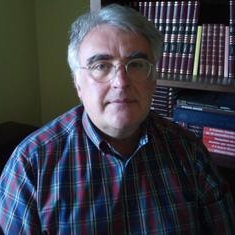Advances in Low-Temperature Mineralogy and Geochemistry
A special issue of Minerals (ISSN 2075-163X). This special issue belongs to the section "Mineral Geochemistry and Geochronology".
Deadline for manuscript submissions: 30 April 2024 | Viewed by 18693
Special Issue Editors
Interests: low-temperature mineralogy and geochemistry; stable and light isotope geochemistry; clay minerals and zeolites; hydrothermal alteration and diagenesis; biomineralization; uranium aqueous geochemistry; analytic techniques
Interests: clay minerals; low-temperature mineralogy; thermobarometry; fluid–rock interactions; nanoscale compositional analysis techniques; diagenesis and low-grade metamorphism
Special Issue Information
Dear Colleagues,
Low-temperature mineralogy and geochemistry, i.e., mineralogical and geochemical reactions occurring at temperatures below 300 °C, provide challenging topics of the broad qualitative questions related to near-surface Earth processes.
Low-temperature geological processes involve mineral dissolution and the re-crystallization, transformation, mineralization, chemical transfer, and recycling of materials occurring at shallow levels of the Earth’s crust, whose study must allow for characterizing crustal alteration, evolution, and growth. Low-temperature geochemical processes are ubiquitous in chemical weathering, diagenesis, very low-grade metamorphism, and post-magmatic processes, and enable the explaination of the P–T–X history of the Earth’s crust.
In this way, light, stable, and radiogenic isotope ratios are potentially powerful tracers of fluid–mineral interactions, while thermobarometers based on fine mineralogical compositions make appropriate probes to reconstruct pro- and retro-grade mineralogical reactions. Furthermore, remarkable advances have recently been made in understanding chemical elements recycling within the diagenesis and low-grade metamorphism environment, hydrothermal systems, and fluids circulation. Over the past decade, analytical techniques have also advanced and offered a new vision to scientists in mineralogy and geochemistry, making data available with an unparalleled analytical- and spatial-resolution.
Substantial and exciting advanced contributions of low-temperature mineralogy and geochemistry are expected by publishing this Special Issue with contributions from a broad field audience.
Prof. Dr. Iuliu Bobos
Dr. Franck Bourdelle
Guest Editors
Manuscript Submission Information
Manuscripts should be submitted online at www.mdpi.com by registering and logging in to this website. Once you are registered, click here to go to the submission form. Manuscripts can be submitted until the deadline. All submissions that pass pre-check are peer-reviewed. Accepted papers will be published continuously in the journal (as soon as accepted) and will be listed together on the special issue website. Research articles, review articles as well as short communications are invited. For planned papers, a title and short abstract (about 100 words) can be sent to the Editorial Office for announcement on this website.
Submitted manuscripts should not have been published previously, nor be under consideration for publication elsewhere (except conference proceedings papers). All manuscripts are thoroughly refereed through a single-blind peer-review process. A guide for authors and other relevant information for submission of manuscripts is available on the Instructions for Authors page. Minerals is an international peer-reviewed open access monthly journal published by MDPI.
Please visit the Instructions for Authors page before submitting a manuscript. The Article Processing Charge (APC) for publication in this open access journal is 2400 CHF (Swiss Francs). Submitted papers should be well formatted and use good English. Authors may use MDPI's English editing service prior to publication or during author revisions.
Keywords
- weathering
- diagenesis
- very-low grade metamorphism
- hydrothermal systems
- mineral–water and thermo–baric reactions
- trace recycled elements
- light, stable, and radiogenic isotope geochemistry






